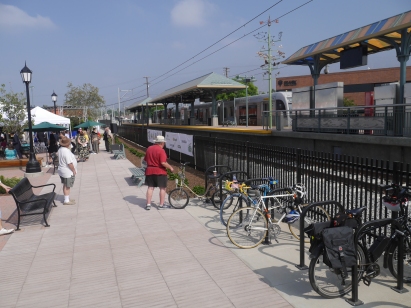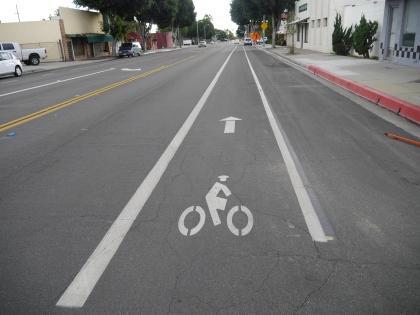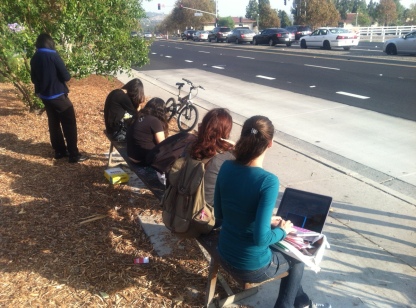Turn the Page
The new year provides an opportunity to look back on 2015 and ahead to 2016. As always, it’s a blend of disappointment that much-needed changes have been so slow in coming, gratification for the accomplishments, and hope for a continued shift in our transportation priorities in the future. What is offered here is a highly personal, mostly local, list of the best of 2015 and some of my aspirations for bikes and alternative transportation in 2016.
The best of 2015:
- A shift in the conversation about climate change. 2015 may well be seen as the year the global community got serious about recognizing the necessity of radical action on climate change. The Pope’s Encyclical on Climate Change, “Laudato Si,” provided a powerful moral argument for reducing carbon emissions while addressing the combined social and environmental injustices of the current economic model. Then, in December, leaders of over 190 nation-states met at the Paris Climate Summit and agreed to commit their nations to voluntary reductions in greenhouse gas emissions. Pressure from citizen activists from around the world and from vulnerable nations elicited an “aspirational” goal of limiting climate change to 1.5 degrees celsius above pre-industrial averages. While the agreement lacks any binding enforcement mechanism, it is an important starting point from which continued climate justice activism can and must proceed. In order for these goals to have any chance of success, transportation sustainability (and equity) are going to play a role. That means transit and bikes.
- Construction of Phase 1 Extension of the Gold Line from Pasadena to Azusa was completed. The extension opens up possibilities for more transit choices in the San Gabriel Valley, and eliminates one more excuse for people who live nearby to go car free or car light.
- CicLAvia came to Pasadena! The fun of cruising down a car-free Colorado Blvd. with thousands of other people still brings a smile to my face and reminds us why we must continue to push for more car-free space (temporarily or permanently) in our cities. The car-free movement continued to spread in 2015, as iconic Paris opened its streets to people for a day in September.

- New Bike Co-Op opened in El Monte. BikeSGV’s new bike co-op, the Bike Education Center, provides a space for people from the local community to build or fix their own bikes.
- Metro’s Bike Hub at El Monte Bus Station. An important amenity for transit users who want a secure storage space for their bikes and a place for quick bike repairs right on the premises of the transit station.
- Pro-Bike Mayor elected in Pasadena. The election of Terry Tornek as Mayor of Pasadena means that City Hall will continue to provide strong leadership for transit, walking, and bicycling in the city.
- Mobility 2035. LA City Council passed an ambitious mobility plan that, if implemented, will provide more sustainable mobility choices for people in LA.
- Local bike infrastructure. This is the weakest of 2015’s accomplishments. But it is important to applaud any improvement. For me, the bike lanes on First St. in Arcadia, near the new Gold Line station, even though they only stretch for about half a mile, are a sign that the city is trying to accommodate bicycle commuters. Here’s hoping they are extended in 2016.
What I’m anticipating/hoping/wishing/working for in 2016:
- Gold Line extension opening, March 5, 2016. This is a red-letter day for sure. Looking forward to that first ride out to Azusa.
- Monrovia’s new bike plan. Monrovia, at the behest of it’s local active transportation advocacy group Move Monrovia, has contracted with Alta Planning to produce a bike plan for the city. I’m anxious to see the new plan and work with local advocates to make sure it gets approved and funded.
- Golden Streets 626: The San Gabriel Valley’s big open streets event, June 26, 2016 (i.e., 6.26)
- More bike lanes … everywhere. Bike lanes are good. Buffered bike lanes are better, and protected bike lanes (a.k.a. “Cycle Tracks”) are best. I’m especially hoping to see some progress in Pasadena, Temple City, Arcadia, Monrovia. Et tu, El Monte?
- More bike racks (not the crappy, wheel-bender kind) … everywhere.
- Commitment from university administrators for a transit center on Cal Poly Pomona’s campus. Cal Poly Pomona, where I teach, currently has no transit stop on campus. Bus riders are forced to walk a long distance to sit on a splintered bench on Temple Ave. Yet the University is building a multimillion-dollar parking garage and raising student parking fees. Time for this otherwise “green” campus to make its transportation system green, too.
- Buffered bike lanes on Sierra Madre Blvd. This has long been on my wish list. There’s no reason it can’t be done. The street is wide enough, the traffic speeds warrant it. Hasn’t happened yet. Still, I’ll keep asking ….
Happy car-light 2016 to all, and remember, there’s no such thing as a “green” car. Whenever possible, leave your tin polluter box at home. Be part of the solution, not part of the problem. Walk, bike, take the bus or train. It makes a difference!










